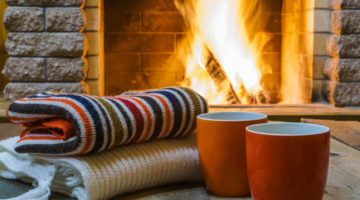
Most homes in the UK have a complex network of water pipes. Insulating this pipework is called lagging and by sealing in heat, it saves energy and has a number of other benefits too. Here we talk you through reasons for the measure, how it is done and materials you can choose from.
What are the dangers of un-insulated water pipes?
There are several reasons to insulate your pipework:
- Copper’s high conductivity means it is great for transporting hot water in central heating systems, but just as the pipes get very warm, they can also get too cold. When water freezes, pipes can burst, potentially leading to expensive repair work.
- Pipes in cold environments can attract water vapour – when it condenses on the surface, it can lead to corrosion. It can also potentially encourage damp within walls. Insulation prevents this by raising the surface temperature of the pipe and forming a water-vapour barrier.
- Exposed metal pipework can reach extreme temperatures of hot and cold – from a safety point of view, insulating them means people are less likely to injure themselves if they come into contact with pipes.
- Insulation can also form a sound barrier. Pipes sometimes radiate mechanical noise or you can hear water gurgling through them. Putting something over the top can help muffle sound.
How does lagging work?
To minimise the risk of both freezing and heat loss, copper pipes can be insulated fairly cheaply with pipe insulation. It’s an easy DIY task and supplies are available online – you just place foam tubes around pipes and secure them in place with cable ties. It may be worth hiring a plumber to install it in hard-to-reach areas.
Everyone knows the importance of insulating their walls and lofts; so why do people forget their water pipes? Lagging is especially worthwhile in the loft, and pipes leading to outside taps, as these areas may well be the coldest.
Pipe insulation materials
Polyethylene (flexible plastic foamed insulation) – this is probably the most widely used type of pipe insulation.
Mineral/glass wool – This has good thermal, acoustic and fire-retardant properties. It does not shrink, swell, rot or burn, so is a popular choice.
Flexible elastomeric foam – This rubber-like material is highly resistant to the passage of water vapour and has good thermal properties, even when used at comparatively small thicknesses.
Rigid foam – normally used in industrial buildings, for really large pipes. Not widely commercially available for domestic applications.
Silica aerogel – No-one currently manufactures aerogel insulation specifically for pipes, but there are hopes that it will be available in the future. Currently available as a paste, the material has the lowest thermal conductivity of any commercially produced insulation.
Tape – this can be made from foil, plastic or cork, and is wrapped around pipes.












One Comment